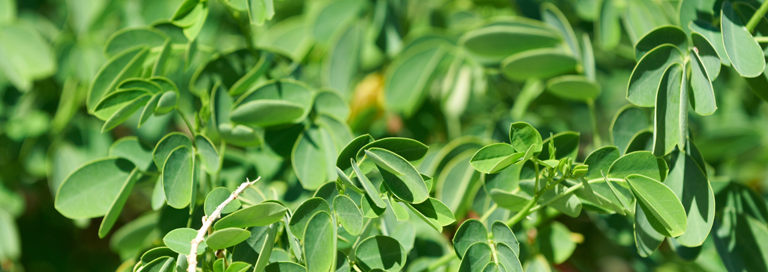If you do an internet search for “what causes obesity,” the first place Google takes you to is the website of the Centers for Disease Control and Prevention.
And the CDC’s first sentence puts the blame squarely on the individual…in other words, you.
Obesity, they say, results from individual behavior and genetics.
But as a regular reader, you know that you don’t sick – and obesity is a disease – because your great-aunt Sally passed on her “bad genes.”
For decades, mainstream medicine has ignored and dismissed the real cause of obesity.
They tell you: The only way to lose weight is to cut your calories by eating low-fat food.
Yet, despite eating less fat, more Americans are overweight today than at any time in our history. The so-called experts, like those at the CDC, got it all wrong. As a result, we’re fatter, sicker, and weaker than ever.
In the U.S., the obesity rate is now over 40% – three times higher than in the 1980s.1
To lose weight, I advise my patients to weigh by ignoring mainstream medicine’s bad advice…and returning to the foods of our ancestors.
And this includes adding leaves from a “miracle tree” to your diet. Let me explain…
Healers on almost every continent on Earth – except North America – have introduced me to this tree.
Its botanical name is Moringa oleifera. And while most people here have never heard of it – and few doctors would ever think about using it as a treatment – it’s known by at least 210 different names in 82 countries.
Jamaica and Peru call it the “Tree of Life.” In several African languages, it’s named “Nebedaye,” which means “never die.” On the Indonesian island of Bali, locals call it “Daun Kelor” or the drumstick tree.
Ancient cultures have used Moringa oleifera as a superfood
and a kind of pharmacy-on-a-tree for thousands of years. Some researchers today think it may even hold the key to human survival.Astonishingly, it’s packed with more than 200 antioxidants, and its bark, seeds, and leaves also have powerful anti-inflammatory and antibiotic properties. But that’s just for starters.
Moringa can strengthen weak bones, enrich anemic blood, boost libido, and even help your body build and repair muscle. Ounce for ounce has the calcium of 16 glasses of milk, the vitamin C of seven oranges, the potassium of 15 bananas, and almost 25 times the iron of spinach.
I’ve seen traditional healers in Africa and Bali use moringa to treat everything from skin infections, headaches, and constipation to modern diseases like diabetes, heart disease, prostate problems, high blood pressure, cancer, and HIV.2,3,4
Now researchers in Asia have revealed that moringa leaves are also a potent gut health booster with powerful prebiotic anti-obesity properties.
American doctors should pay close attention to this research because it has the power to alleviate our obesity crisis.
Scientists discovered that moringa leaves contain compounds called polysaccharides, on which good gut bacteria thrive.
One of those polysaccharides, MOs-2-a, was shown to boost the number of a special strain of gut bacteria with potent anti-obesity and weight-control properties.5
At the same time, MOs-2-a was also shown to strengthen the immune system and improve the function of digestive enzymes that degrade starch, fats, and protein in food.
Earlier research found that moringa reduces weight gain and insulin resistance in animals.6 Additional studies show that it reduces the fat formation and enhances fat breakdown.7
The good news is that – even though American doctors ignore it – you can easily find moringa powder in most health food stores and online.
And moringa isn’t just good for you; it’s tasty. Moringa has a subtle, slightly spicy flavor, a little like.
You can cook moringa leaves and seeds in oil – a popular dish in Africa.
You can use it in salads, curries, and savory dishes. Or sprinkle it into your smoothie and whatever fruits and vegetables you like.
Sip moringa tea for weight loss and so much more
One of the easiest ways to use moringa is as tea. Here’s a simple recipe for a moringa tea I was shown in Africa. You can make it hot or cold.
Ingredients:
- 2 teaspoons of moringa leaf powder
- 1 thin slice of fresh ginger root
- Freshly squeezed lemon juice
Preparation:
- Add 8-12 ounces of very hot water
- Stir thoroughly and allow the tea to be steep, covered, for about 10 minutes
- For cold tea, chill in the refrigerator for about half an hour and serve over ice
When I first tried it, I added a little bit of sweetener made from the African katemfe fruit, but a little honey will also do the trick.
Moringa capsules are also available. I recommend starting with 500 mg a day.
To Your Good Health,

Al Sears, MD, CNS
References:
1. Centers for Disease Control and Prevention. “Obesity is a common, serious, and costly disease.” Available at: https://www.cdc.gov/obesity/data/adult.html. Accessed April 4, 2022.
2. Mbikay M. “Therapeutic potential of moringa oleifera leaves in chronic hyperglycemia and dyslipidemia: A review.” Front Pharmacol. 2012; 3:24.
3. Gopalakrishnanb L, et al. “Moringa oleifera: A review on nutritive importance and its medicinal application.” Food Sci Hum Wellness. 2016;5(2):49-56.
4. Chan Sun M, et al. “Consumption of Moringa oleifera lam leaves lowers postprandial blood pressure.” J Am Coll Nutr. 2020 Jan;39(1):54-62.
5. Fang Wang, et al. “The beneficial effects of a polysaccharide from moringa oleifera leaf on gut microecology in mice.” J Med Food. 2019 Sep;22(9):907-918.
6. Waterman C, et al. “Isothiocyanate-rich Moringa oleifera extract reduces weight gain, insulin resistance and hepatic gluconeogenesis in mice.” Mol Nutr Food Res. 2015 Jun; 59(6): 1013–1024.
7. Xie J, et al. “Moringa oleifera leaf petroleum ether extract inhibits lipogenesis by activating the AMPK signaling pathway.” Front Pharmacol. 2018 Dec 18;9:1447.

